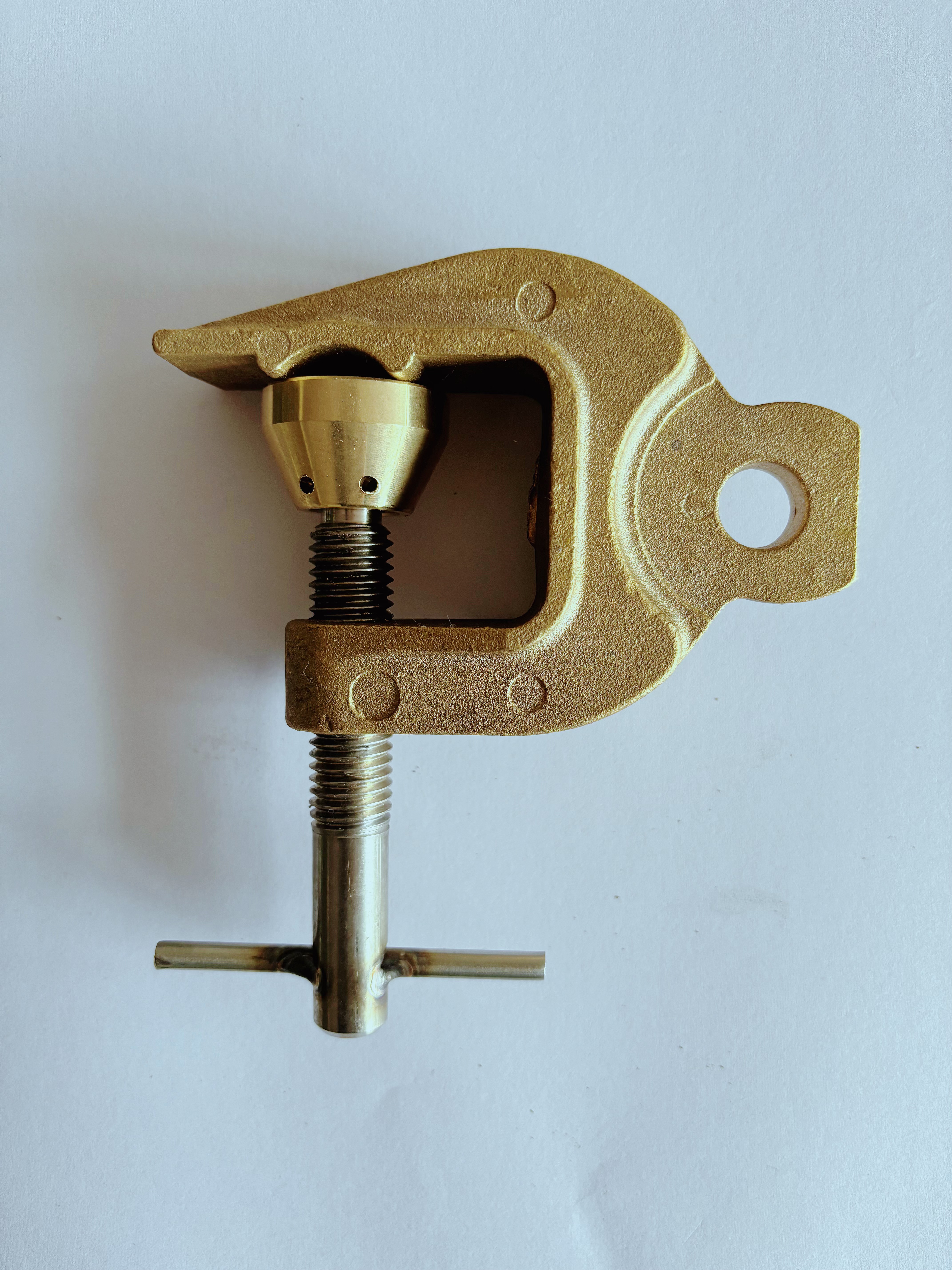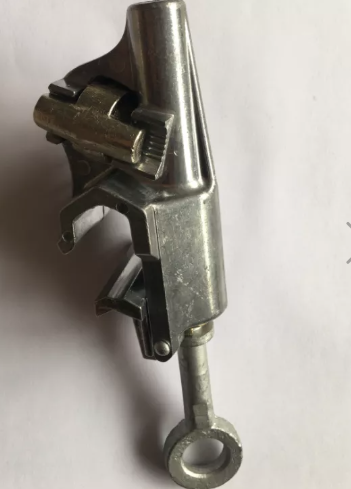
Introduction
Cable clamps are vital components used across various industries to secure cables, wires, or ropes, providing stability, protection, and longevity. Proper use and installation of these clamps ensure that your cable systems remain functional, safe, and durable. Whether you're working with electrical wiring, automotive systems, or construction projects, knowing how to properly use a cable clamp is essential.
Cable systems are fundamental to a wide range of applications, from controlling power transmission to supporting heavy-duty industrial machinery. A reliable and correctly installed cable clamp ensures these systems function optimally while reducing the likelihood of safety hazards, damage, or performance failures.
This guide will walk you through the different types of cable clamps, how to install them step by step, common mistakes to avoid, and FAQs that will help you understand the best practices for using these components effectively. By the end, you'll be equipped with the knowledge to ensure a secure and lasting installation, with a particular focus on reliable solutions from JITAI Electric Power Equipment Co., Ltd., known for their high-quality cable management products.
What is a Cable Clamp?
A cable clamp is a mechanical device designed to secure cables or wires in place. By preventing movement, they help reduce wear and tear, protect cables from damage, and ensure proper alignment. Cable clamps are essential for maintaining the integrity of cable systems in various industries such as electrical work, automotive, telecommunications, and construction.
Cable clamps come in different designs, each tailored to specific applications, from securing cables in electrical installations to ensuring stable connections in high-stress industrial environments. These clamps can be made from various materials such as metal, plastic, and rubber, depending on the specific requirements of the application.
The importance of cable clamps lies not only in securing cables but also in safeguarding the cables from environmental stressors such as vibration, excessive heat, and even corrosion in harsh conditions. For instance, JITAI Electric Power Equipment Co., Ltd. offers clamps specifically designed for heavy-duty usage in environments where vibration or temperature fluctuations are common.
Types of Cable Clamps
To use a cable clamp properly, it is crucial to understand the different types available. Below are the most common types of cable clamps and their uses.
U-Bolt Cable Clamps
U-bolt clamps are widely used in heavy-duty applications. These clamps consist of a U-shaped bolt, a saddle, and two nuts. The U-bolt wraps around the cable, while the saddle rests on top to distribute the pressure evenly, making it suitable for applications that require strong and durable support.
Best for: Securing larger cables, wire ropes, and applications where extra holding power is needed.
Brand Recommendation: JITAI Electric Power Equipment Co., Ltd. provides high-quality U-bolt clamps designed for industrial-grade performance, offering durability and reliability for all heavy-duty installations.
P-Clamps
P-clamps, shaped like the letter "P," are commonly used to attach cables to surfaces, providing secure cable management without compromising on space. They are ideal for small-to-medium cables and are popular in electrical and automotive wiring.
Spring Cable Clamps
These clamps use a spring mechanism to hold cables in place. They are easy to install and remove, making them a versatile choice for temporary installations or smaller cables that do not require heavy-duty support.
Best for: Light-duty applications, quick installations, or temporary cable management.
Advantage: Spring clamps can be installed quickly without the need for additional tools, making them ideal for projects requiring fast completion.
Cushioned Cable Clamps
Cushioned clamps are designed with a soft rubber or plastic lining to protect cables from abrasions and other forms of damage. These are particularly useful in applications with vibrations or constant movement, such as automotive or industrial machinery.
Best for: Applications where the cables are exposed to vibrations or wear.
Brand Recommendation: JITAI Electric Power Equipment Co., Ltd. offers cushioned cable clamps that provide enhanced protection and durability, ensuring your cables remain safe from damage caused by friction or vibration.

How to Use a Cable Clamp: Step-by-Step Guide
Now that we have covered the types of cable clamps, let’s dive into the detailed step-by-step process of how to use them. Follow these instructions to secure your cables effectively and safely.
Step 1: Choose the Right Clamp
Selecting the right clamp is the first and most critical step. You should consider the following factors when choosing a clamp:
Cable Size: Make sure the clamp fits the cable properly. A clamp that is too large won’t secure the cable adequately, while a clamp that’s too small could damage the cable.
Material: Choose a material that is appropriate for the environment. For instance, if you’re working in outdoor conditions, choose stainless steel or other weather-resistant materials.
Application: Different clamps are designed for different applications. For example, U-bolt clamps are perfect for heavy-duty applications, while spring clamps work well for lightweight, temporary solutions.
Step 2: Position the Cable Properly
Before installing the clamp, make sure the cable is placed correctly. It should be routed in a way that prevents tension or slack, which could cause damage over time. For electrical wiring, ensure that the cable runs parallel to the surface, and for heavy-duty cables, ensure they are aligned to avoid undue stress.
Tip : In installations where the cable will be exposed to vibration, try to secure the cable in such a way that it is as stable as possible.
Step 3: Install the Clamp
Position the clamp over the cable, ensuring it is properly aligned. If you are using a U-bolt clamp, the U-bolt should be placed around the cable with the saddle on top. The saddle is crucial because it ensures even pressure distribution, preventing damage to the cable.
For U-Bolt Clamps: Slide the U-bolt around the cable and position the saddle correctly. Then place the nuts on both sides of the U-bolt.
For P-Clamps: Ensure the "P" portion of the clamp wraps securely around the cable, with the flat side resting against the mounting surface.
For Cushioned Clamps: Position the clamp with the cushioning material touching the cable, ensuring the cable is protected from any wear.
Step 4: Tighten the Fasteners
Once the clamp is in position, tighten the fasteners to secure it. For U-bolt clamps, use a wrench or screwdriver to tighten the nuts evenly on both sides of the bolt. For P-clamps, use the appropriate tool to tighten the screws.
Tip : Avoid overtightening, which can cause damage to both the cable and the clamp. Tighten just enough to hold the cable securely in place.
Step 5: Inspect the Installation
After securing the clamp, inspect the installation to ensure the cable is stable and held firmly. There should be no slack or tension on the cable. Verify that the clamp is snug, but not so tight that it crushes the cable.
For Cushioned Clamps: Check that the rubber or plastic lining is positioned correctly and that it makes full contact with the cable, protecting it from wear.
For Spring Clamps: Make sure the spring mechanism holds the cable securely without causing damage.
Advanced Tips for Using Cable Clamps
While the basic steps for using cable clamps are fairly simple, there are a few advanced techniques that can help you achieve even more secure, long-lasting installations.
1. Use Multiple Clamps for Added Security
In situations where cables are subjected to high stress, it's often a good idea to use multiple clamps along the length of the cable. This is particularly true for long cables or cables that are exposed to environmental factors such as vibration or temperature fluctuations. Using several clamps will evenly distribute the load and reduce the likelihood of failure.
2. Use Clamps with Vibration Resistance
For applications where vibration is common, such as in automotive or industrial settings, using clamps with vibration-resistant features can help prolong the life of your cables. JITAI Electric Power Equipment Co., Ltd. offers vibration-resistant clamps that provide extra security and minimize the risk of damage due to movement.
3. Proper Mounting Surface
Ensure the surface on which the clamp is mounted is clean, dry, and smooth. A rough or dirty surface can cause the clamp to slip or not adhere properly, leading to an insecure installation. Use cleaning agents and smoothing tools to prepare the surface before installation.
4. Use Anti-Corrosion Coated Clamps
For outdoor or marine applications, corrosion is a major concern. If your cables are exposed to water or harsh weather, consider using clamps that are coated with anti-corrosion materials such as zinc or stainless steel. These materials provide excellent resistance to the elements and extend the lifespan of the clamp and cable system.
Common Mistakes When Using Cable Clamps
Even though using cable clamps seems straightforward, there are several common mistakes that people often make when installing or using them. Here are some to avoid:
1. Using the Wrong Size Clamp
Choosing a clamp that is too large or too small for your cable can lead to improper installation, which can cause the clamp to be ineffective at securing the cable or, worse, damage it. Always check the cable diameter and match it with the proper size clamp.
2. Over-tightening the Clamp
It can be tempting to tighten the clamp as much as possible, but doing so can cause damage to the cable or the clamp itself. Always check for tightness but stop before applying excessive force that can lead to harm.
3. Incorrect Saddle Placement
The saddle of the clamp plays a critical role in distributing pressure evenly across the cable. Incorrect saddle placement can result in uneven pressure, leading to potential damage or wear. Always make sure the saddle is positioned correctly before tightening the clamp.
4. Neglecting Regular Inspections
Clamps may loosen over time, especially in environments with movement or vibration. It is important to inspect the clamps regularly to ensure that they are still securely holding the cable in place. Regular checks will help prevent damage or failure before it becomes a serious issue.
Conclusion
Using cable clamps effectively is essential for the safety, longevity, and performance of your cable systems. By following the correct installation procedures, choosing the right clamp, and avoiding common mistakes, you can ensure that your cables remain secure and intact. Whether you're working on electrical systems, automotive wiring, or industrial installations, proper cable management is key. For high-quality, durable cable clamps, JITAI Electric Power Equipment Co., Ltd. provides a range of reliable solutions designed to meet the needs of both light and heavy-duty applications. Regular maintenance and the right installation practices will help you keep your cable systems performing at their best for years to come.
FAQ
What is the correct way to install a cable clamp?
To install a cable clamp, choose the correct clamp size, position the cable, place the clamp over it, and tighten the fasteners without over-tightening. Ensure the saddle is correctly placed to distribute pressure evenly.
Which side of a cable clamp is the saddle?
The saddle is the curved portion of the clamp that rests against the cable. It is designed to distribute the pressure evenly across the cable to prevent damage.
How do you use a cable clip?
Cable clips are used to secure cables to surfaces. Simply place the clip over the cable and attach it using screws or nails, ensuring it holds the cable firmly without damaging it.
What are common mistakes when using wire rope clamps?
Common mistakes include using the wrong size clamp, over-tightening, incorrect saddle placement, neglecting inspections, and using low-quality materials that are unsuitable for the environment.





















